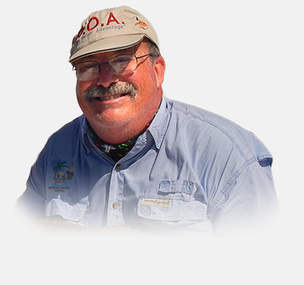
As we welcome a new decade, it is once again time to reflect on the events and accomplishments of 2019 and count our many blessings. As passionate anglers we are truly blessed to live in Florida where spending time on the water and angling are year-round endeavors. I am also thankful for another great year of fishing with my clients and friends on the revered waters of the Indian River Lagoon estuary and the St Johns River. Thank you all for a year filled with adventure on the water and many great memories.
In preparation for this forecast, I first reviewed last year fishing photos, and I was taken back by the number of quality fish caught and the enjoyment expressed on the faces of my clients.
While seeking input for this report, my good friend and mentor Captain Rodney Smith taught me to begin with the end in mind, and the end in this case is doing everything we can to conserve and protect the resource we all love and cherish. This report is not only an expression of my thoughts and experience, but also those of many within my circle of influence, and together we can make the difference in promoting the use, and not the abuse of resources we love and respect. In the new decade please join me in doing our part by working within each of our own circles. Take some time to reach out to others, share your passion and take a kid or some new to our area fishing.
Winter on the east central coast of Florida can not be characterized by any specific dates, but rather by the temperature differences generated by passing cold fronts as they swing south through Florida. These variations are subject to change from year to year and are impossible to predict. On the average, daytime temperatures usually range from the 50’s in the morning to around the 70’s by afternoon. Likewise, water temperatures average in the upper 60’s, but they can drop as low as the 50’s during extended cold periods. On warm sunny days, water temperatures can increase as much as ten degrees on the shallow flats and sandbars. All these factors greatly influence the species targeted and the technique used.
On the flats during the winter, redfish and sea trout will seek the warmest water they can find. Start out working the deeper edges of the flats in the morning and then move into the warmer wind protected flats around mid-day to late afternoon. An early morning start is not necessary this time of year. On colder days, focus your attention on the deeper holes using a very slow presentation. When targeting redfish and trout in these deeper holes, I prefer using shrimp imitation baits like DOA, Shrimp in the clear or nightglow colors fished extremely slow. Other species encountered in January are black drum, flounder, sheepshead, jacks, Spanish mackerel, and bluefish. Also, January is one of the best months to target large black drum in deeper water around the bridges, deeper channels and canals.
Along the beaches, pompano will remain the staple for most surf anglers, with a mixed bag of whiting, slot size black drum, Spanish mackerel, and bluefish added in. Try fishing with sand fleas (mole crabs) if you can catch them, cut fresh clams, or freshly peeled live shrimp.
Near-shore and Inlet fishing can be good in January weather permitting, with Sebastian, Port Canaveral and Ponce De Leon Inlets proving to be the most productive. There are still some reports of flounder moving through the inlets, but the bite has slowed considerably. On the inside at Sebastian Inlet, look for good numbers of pompano, ladyfish, and jacks to be located on the flats both north and south of the inlet. On prefrontal days with westerly winds, try fishing just off the beaches with either mole crabs or fresh peeled shrimp on a jig head. January is the month when the tripletails become consistent on the Port Canaveral buoy line, and their numbers will increase as the month progresses. The other hot item near-shore is king mackerel holding along the 70 to 90-foot reefs of North Pelican and 8A.
Finally, January marks the beginning of the American Shad run up the St. Johns River. Last year I started catching shad on January 13th, and the run remained good through March. The shad have started to arrive in the Marina Isle and Lemmon Bluff areas and upstream past Lake Harney and the Little Big Econ. Currently, some shad are being caught, but you have to work for them. The water levels are still high due to recent rains and all the minnows have retreated back into the pastures grassed, so the topwater bass and crappie bite we experienced in December has diminished, but the minnows should return once the water levels drop withing the banks of the river
In closing, I wish you a happy, prosperous, and fishfull New Year. As always, if you have questions or need information, please contact me.
Good luck and good fishing,
Captain Tom Van Horn
Mosquito Coast Fishing Charters
www.irl-fishing.com
- January 2021:Tom Van Horn - December 31, 2020
- December, Tom Van Horn - December 1, 2020
- Tom Van Horn:November - October 30, 2020











